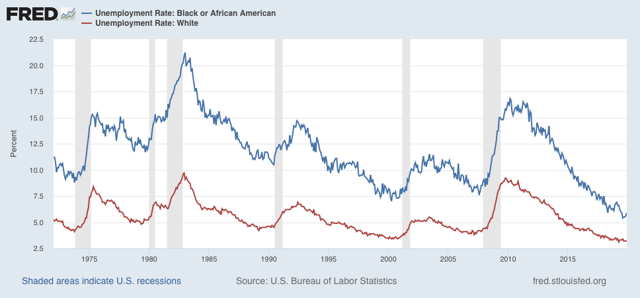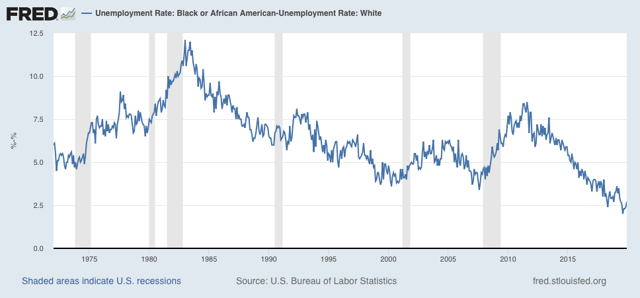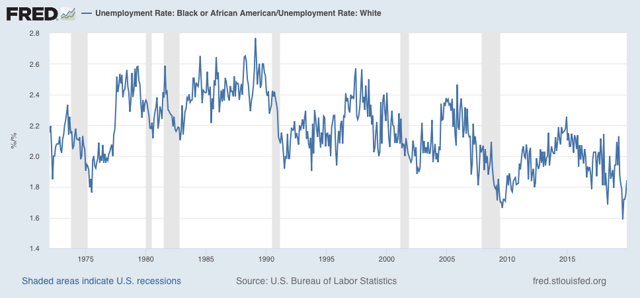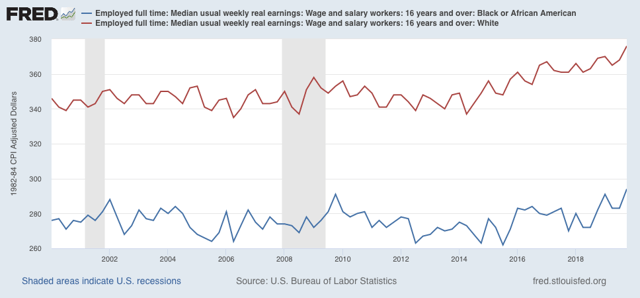- by New Deal democrat
In observance of Martin Luther King’s birthday, almost all US markets are closed and there is no economic data.
So on this day let’s see the extent to which economic opportunity in several neutral metrics has improved since the passage of the Civil Rights Acts in the 1960s.
Here in unemployment for African Americans (blue) vs. whites (red) since the former began to be measured in 1972 (white unemployment had been measured since the 1950s - interesting that black unemployment wasn’t even deemed worthy of being separately measured before the 1970s!):

Unemployment for whites made a 50 year low at 3.1% earlier in 2019. It was only lower, at 3.0%, in 1969 (not shown). African American unemployment made its all time low, at 5.4%, in August of last year.
To get a clearer picture how the two measures compare, here are two other ways to look at the same data.
First, here is the % by which the black unemployment rate has exceeded the white unemployment rate:

At the worst of the 1970s and 1980s, while white unemployment was bad, black unemployment exceeded it by over 10%! There has been general improvement in each expansion since, with black unemployment exceeding white unemployment by only 2% by last year.
Another good way to look at this is the black unemployment rate as a multiple of that for whites:

At its worst, black unemployment was more than 2.6x that of whites. The multiple has gradually improved so that last year it was only 1.6x that of whites.
The bottom line here is: progress over the past 50 years, but still a long way to go. At their rates of improvement over the past 40 years, the former measure will reach parity in about another 30 years; but at its historical rate of improvement the latter multiple would require about another 80 years.
Finally, when it comes to wages, these have only been measured since 2000, and there is still roughly a 25% gap in average weekly wages:
